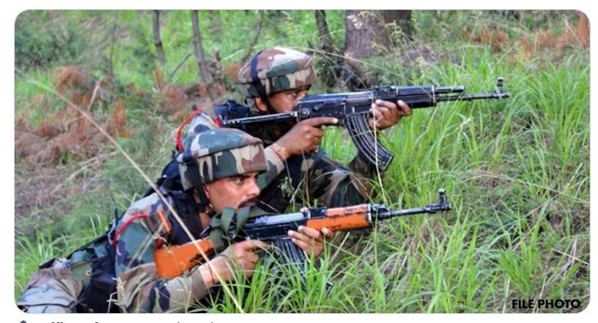Operation Mahadev: India’s Precise and Powerful Answer to Terror, Echoing the Spirit of Operation Sindoor

Operation Mahadev: India’s Precise and Powerful Answer to Terror, Echoing the Spirit of Operation Sindoor
Justice for Pahalgam: 3 Terrorists Killed in High-Impact Operation Mahadev
In a significant breakthrough today, the Indian Army’s Chinar Corps neutralized three terrorists in South Kashmir’s Lidwas region, under a high-intensity counter-terror mission named Operation Mahadev. These individuals are suspected to be behind the recent Pahalgam terror attack, which claimed the lives of security personnel and left the region on high alert.
As per official Army communication via their X handle, contact was established in General Area Lidwas, following which the encounter led to the elimination of the terror suspects. The operation is still ongoing, and final identity confirmation is awaited, though credible intelligence suggests these were key players behind the Pahalgam ambush.
This isn’t just another military win—it’s a well-timed, strategic follow-through, deeply connected to an earlier mission that reshaped India's anti-terror landscape: Operation Sindoor.
Operation Mahadev: Not Just a Strike, But a Strategic Sequel to Operation Sindoor
To understand the full weight of today’s encounter, one must look beyond the forests of Lidwas and trace the footsteps back to Operation Sindoor, which unfolded earlier this year across Kupwara and Kulgam.

While Operation Sindoor was a pre-emptive strike aimed at dismantling cross-border launch pads and eliminating infiltrating militants along the LoC, Operation Mahadev stands out as its reactive counterpart—a swift and decisive retaliation that demonstrates how India’s military strategy is evolving.
Together, these two operations symbolize the shift from a reactive stance to a comprehensive counter-terror doctrine—one that blends real-time intelligence, precision warfare, and immediate action.
The New Face of Indian Counter-Terrorism: Tactical, Tech-Driven & Relentless
What sets Operation Mahadev apart—like its predecessor Sindoor—is its methodical execution:
This multi-agency synergy shows how India is no longer waiting to respond—it’s ready to strike back before the dust settles.
From Sindoor to Mahadev: A Consistent Message to the Enemy
Let’s revisit Operation Sindoor for a moment. Conducted in the first quarter of 2025, it involved multiple simultaneous strikes on infiltration routes and terror camps along the Line of Control, where the Army successfully neutralized over a dozen militants attempting to cross into Indian territory.
The name “Sindoor” (vermilion) was symbolic—representing both the blood spilled by martyrs and the sacred red that marks India’s resolve. It was a tribute and a warning rolled into one.
And now, with Mahadev, the Army has once again chosen a name of divine symbolism—one that represents destruction of evil, protection of dharma, and fierce justice.
Together, Sindoor and Mahadev present a narrative of continuity. They aren’t separate chapters; they are interlinked operations that showcase India's evolved counter-terror doctrine: Attack. Avenge. Annihilate.
The Bigger Picture: Why This Matters Beyond Headlines
Operations like these do more than eliminate individual threats—they reshape regional security and signal India’s strategic clarity.
Here’s why they matter:
Conclusion: A Nation That Remembers, A Force That Responds
Operation Mahadev is not just an answer to one attack. It’s a reminder that the Indian Army carries the memory of every martyr, every ambush, and every innocent life lost.
In choosing to respond within days, in using intelligence over impulse, and in executing with surgical precision, India has told the world:
"We do not forget. We do not forgive. And we do not hesitate."
With Operation Sindoor laying the foundation and Operation Mahadev building the fortress, the Indian Army is setting a new standard for modern warfare—one that blends courage with calculation, emotion with execution.
Frequently Asked Questions
About the Author
Talk n Knock Team